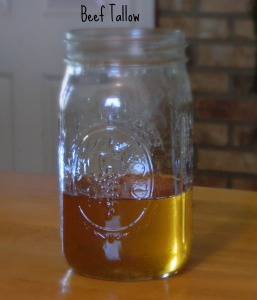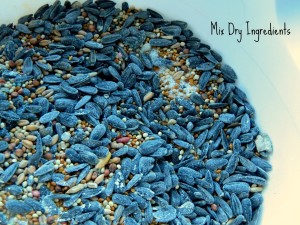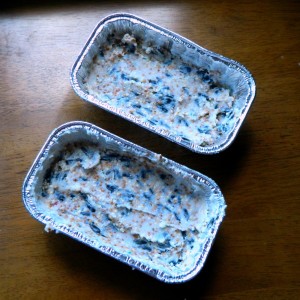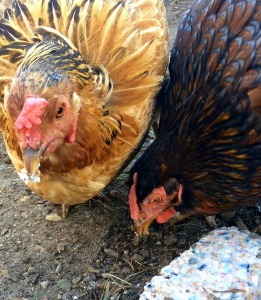Keep your chickens warm, healthy and productive this winter with these cold-weather guidelines.
By Kristina Mercedes Urquhart

Courtesy Hemera/ThinkstockHelp your chickens avoid frost-bitten feet by clearing a path in the snow for them in the chicken run. |
When Old Man Winter moves into town, your chickens are counting on
you to help guide them through the season. Luckily, chickens are bred to
gradually acclimate to the coming cool weather. In fact, most heavy
chicken breeds prefer it to the searing heat of summer. Even so, they’ll
need a little help in certain areas to get through without a hitch.
Here are six tips for successfully overwintering your flock.
1. Fight Frozen Water
Perhaps the most frustrating (and foreseeable) part of overwintering
any livestock is the endless battle against frozen water. Unless you
have electricity in your
coop or
barn, I’m sorry to say that all solutions include a bit of heavy lifting.
One option is to use a heated dog bowl or heated waterer base. It’s
easy to install and inexpensive, but there is one catch: You must use a
double-walled, galvanized-steel water fount in place of the standard
plastic.
If running electricity to your coop is not an option, you may be
carrying your weight in water to the flock several times a day. In this
case, have two or more waterers ready to alternate by thawing indoors.
“One idea is to fill the waterer with hot water and then drop a chunk
of ice (or a good amount of ice cubes) into the water to slowly cool it
down over the course of several hours,” recommends Ashley English,
chicken keeper and author of the
Homemade Living book series.
Whatever method works for you, the important thing is that your
chickens have access to fresh water at all times.
2. Protect Combs and Wattles
In a cold spell with below-freezing temperatures, your chickens' combs and wattles may be susceptible to
frostbite. Use
petroleum jelly
(or olive oil, as a natural alternative) to fight frostbite by applying
it to the affected areas. Apply the lubricant when your chickens have
gone to roost at night. They may not find it pleasant, but it beats the
alternative.
Keep in mind that chicken breeds with large combs and wattles, such as
Leghorns
and many roosters, are more prone to frostbite. You’ll find that
cold-hardy breeds with small combs, such as rose or pea combs, will fare
better come winter.
3. Provide a Path in the Snow
If the snow is piling up to a few inches or more, shovel out a path
for your chickens. Frostbitten toes or feet can be very painful but are
easily avoided by protecting chickens from the snow.
“You don't want an intrepid flock mate deciding to brave a wall of snow,” English says. “The snow will win, every time.”
4. Heat the Coop—or Not
Some chicken keepers swear by heating the coop during the harshest of
winters. While there is a benefit to using a heater or lamp
(supplemental light means more winter eggs), consider the safety risk.
Heaters plus dry pine shavings or other bedding can quickly become a
fire hazard unless properly or professionally installed. Also consider
the possibility of power outages and a subsequent drop in temperature.
Chickens cannot adapt to a sudden plunge in mercury, and it could spell
disaster for your entire flock in one night.
As an alternative, you can allow your chickens to gradually acclimate
to the cooler weather during autumn without heat. In the fall, check
your coop’s roof to ensure it won’t leak during heavy snows. Protect
your chickens from heavy drafts, but be certain there is adequate
ventilation in their enclosure. Accumulated moisture during the cold
months can lead to frostbite.
Finally, don’t underestimate the effectiveness of insulation in your
coop. Your birds will roost together and create a good amount of heat on
their own (the equivalent of 10 watts of heat per chicken). All you
have to do is help the heat stay there.
5. Give Feed a Boost
Consider supplementing your flock’s diet with cracked corn or scratch.
“The fattiness of the scratch will allow the birds to pack on an
extra layer of body fat, which aids them in better combating colder
weather,” English says.
That said, scratch and corn are
treats and do not contain the complete nutrition your flock needs.
“Continue them on their regular feed, tossing a few handfuls of scratch during evening rounds,” she says.
6. Collect Eggs Often
If you’re one of those poor souls, like me, who makes multiple trips
to the chicken coop to change out water, remember to collect
eggs
each time you go. Because chicken eggs are nearly 75-percent water,
they’ll freeze and crack quickly once exposed to the cold air.
Use your judgment when it comes to your flock and your particular
setup—what will work for some may not work for others. As always, check
your flock daily and look for signs of
illness. And once everyone is tucked in, curl up with a hot cup o’ something and enjoy the season.
About the Author: Kristina Mercedes Urquhart
writes from the mountains of western North Carolina, where she lives
with her menagerie of animals, including a mixed flock of chickens. She
contributes to several Bowtie publications, and you can find her regular
column, “Fowl Language” in each issue of Chickens magazine.
http://www.hobbyfarms.com/livestock-and-pets/6-winter-tips-for-your-flock.aspx
More tips from Kristina:
If you give your chickens supplemental lighting on a timer, it should
come on early in the wee hours of the morning and continue until it is
light outside. If you want to leave it on 24/7, that seems to work
also. Do not set the timer to come on at dusk and go off after it is
dark. Since birds are night blind, the light will go off while they are
still active and they will be unable to find their roosts in the dark.
If you set it to come on at 3 or 4 AM, they will crow too early, but
will use the natural dusk to migrate to their perches to sleep. I use a
clear heat lamp and just leave it on 24/7. So far no problems and they
still come into the coop and put themselves to bed when it gets dark
outside.
Our domesticated fowl require a balanced diet provided by most
commercial feeds. Layers, in particular, need the correct ratio of
protein, calcium and other nutrients to be healthy due to their high egg
production. All chicks should be fed a Starter feed (labeled as such),
until about 19 weeks or so -- or until you see the first egg. Once a
pullet begins to lay, she should be switched to a Layer feed, also
labeled as such. It is highly recommended that you provide grit to
break down any treats (usually commercial feed has some grit in it), and
oyster shells to provide for added calcium. Both should be offered
free choice at all times -- a hen will only take what she needs when she
needs it.
Scratch and cracked corn have their benefits, but
consider them like candy for the chicken world. It is not a sufficient
daily diet, and should only be offered as a treat. Given sparsely in
the winter, scratch will increase a hen's body fat and allow her to stay
warmer. Because of the same reasons, do not give scratch in the
summer. If fed scratch/cracked corn year-round, your hens may run into
trouble due to unecessary fattening, such as egg binding and prolapse.
Last tip: allow them to free range and pasture as much as possible,
but remember your flock still requires access to Layer feed to be
healthy.
.

..













